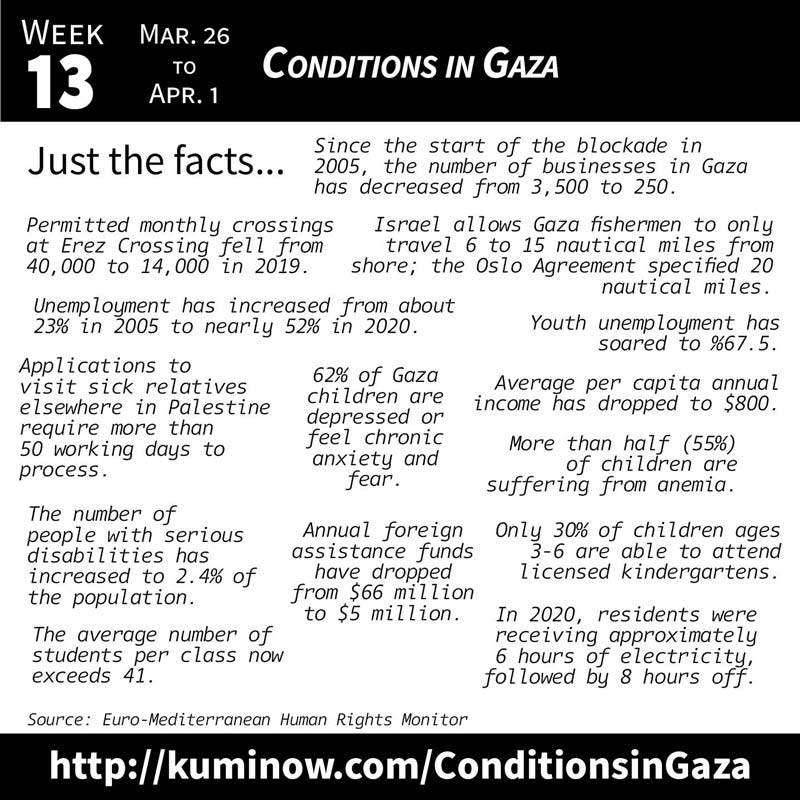Just the Facts: Conditions in Gaza


- Since the start of the blockade in 2005, the number of businesses in Gaza has decreased from 3,500 to 250.
- Permitted monthly crossings at Erez Crossing fell from 40,000 to 14,000 in 2019.
- Israel allows Gaza fishermen to only travel 6 to 15 nautical miles from shore; the Oslo Agreement specified 20 nautical miles.
- Unemployment has increased from about 23% in 2005 to nearly 52% in 2020.
- Youth unemployment has soared to 67.5%.
- Applications to visit sick relatives elsewhere in Palestine require more than 50 working days to process.
- Average per capita annual income has dropped to $800.
- More than half (55%) of children are suffering from anemia.
- 62% of Gaza children are depressed or feel chronic anxiety and fear.
- The number of people with serious disabilities has increased to 2.4% of the population.
- The average number of students per class now exceeds 41.
- Only 30% of children ages 3-6 are able to attend licensed kindergartens.
- In 2020, residents were receiving approximately 6 hours of electricity, followed by 8 hours off.
- Annual foreign assistance funds have dropped from $66 million to $5 million.
This week’s Just the Facts comes from:
- Euro-Mediterranean Human Rights Monitor’s “Gaza: The Dead Zone”
Learning More
- The documentary Gaza Surf Club, available to rent or buy on Vimeo.
- Foundation for Middle East Peace’s recent webinar on Gaza.
- To go deeper, we have an extensive list of Additional Resources at the bottom of this week’s entry and we’re developing a YouTube playlist on the subject.
